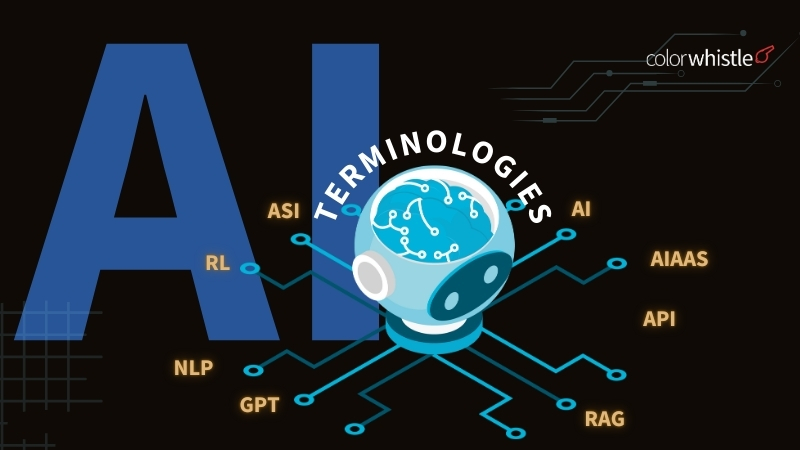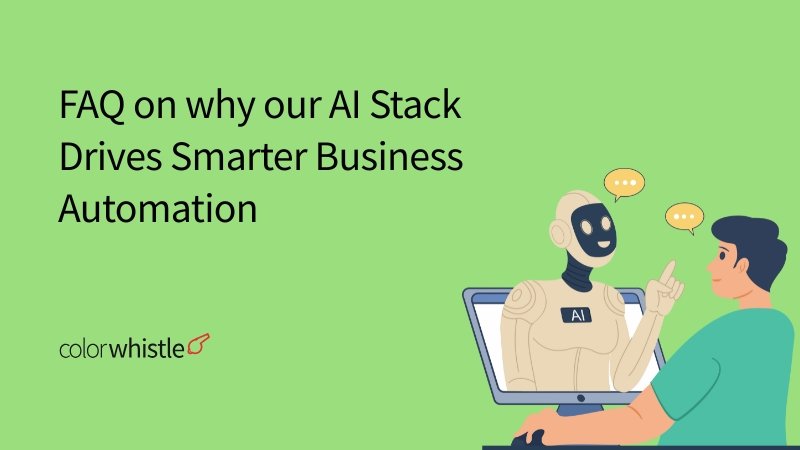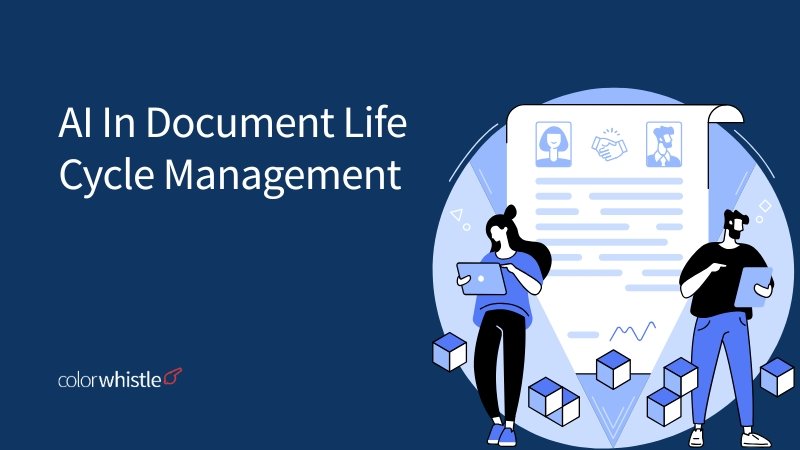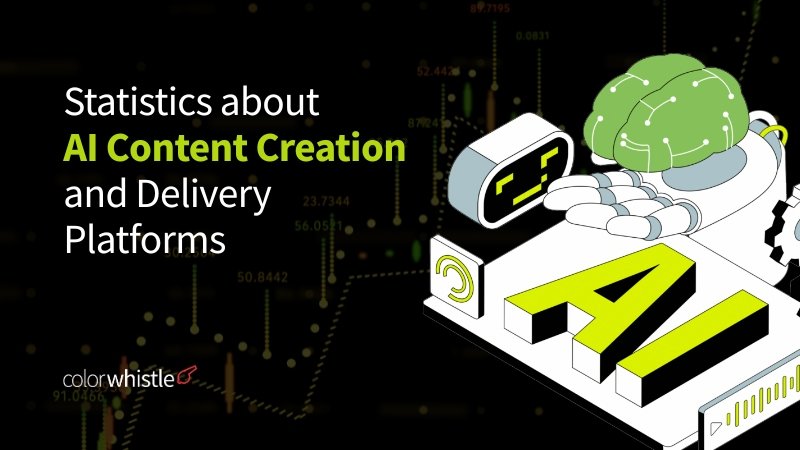Agents
An agent is a computer program or system that is designed to perceive its environment, make decisions and take actions to achieve a specific goal or set of goals. The agent operates autonomously, meaning it is not directly controlled by a human operator.
AGI
Abbreviation: Artificial General Intelligence
Artificial General Intelligence (AGI) refers to AI that can understand, learn, and apply intelligence across various tasks like a human. Unlike narrow AI, which is task-specific, AGI can perform any intellectual task. It includes reasoning, problem-solving, perception, and language understanding. AGI aims to replicate human cognitive abilities.
Annotation
Annotation is the process of labeling data,text, images, or audio,to train AI models. In text-based AI, it involves categorizing sentences, tagging parts of speech, or marking sentiment. Annotated datasets help AI learn patterns, context, and nuances. This process enhances model accuracy and understanding.
ASI
Abbreviation: Artificial Super Intelligence
Artificial Super Intelligence (ASI) refers to a stage of artificial intelligence that surpasses human intelligence across all fields, including creativity, general wisdom, and problem-solving capabilities. Unlike Artificial General Intelligence (AGI), which aims to match human cognitive abilities, ASI represents an AI that is vastly more advanced than the best human brains in practically every field, including scientific understanding, general knowledge, and social skills.
AI
Abbreviation: Artificial Intelligence
AI stands for artificial intelligence, which is the simulation of human intelligence processes by machines or computer systems. AI can mimic human capabilities such as communication, learning, and decision-making.
AI Ethics
AI ethics refers to the issues that AI stakeholders such as engineers and government officials must consider to ensure that the technology is developed and used responsibly. This means adopting and implementing systems that support a safe, secure, unbiased, and environmentally friendly approach to artificial intelligence.
Also Read
Algorithm
An algorithm is a sequence of rules given to an AI machine to perform a task or solve a problem. Common algorithms include classification, regression, and clustering.
API
Abbreviation: Application programming interface
An API, or application programming interface, is a set of protocols that determine how two software applications will interact with each other. APIs tend to be written in programming languages such as C++ or JavaScript.
Anthropomorphism
We use the term anthropomorphism to describe the habit of assigning human-like qualities to AI. While AI systems can imitate human emotions or speech, they don’t possess feelings or consciousness. We might interact with various AI models as if they were colleagues or thought partners, but in reality, they serve as tools for learning and resource development.
AI Bias
AI bias can occur when systems reflect and even amplify existing biases in the data trained on, potentially leading to unfair outcomes.
AI Governance
AI governance ensures that AI systems operate ethically and transparently, in the best interests of all stakeholders. This often involves developing guidelines or policies around the use and impact of AI.
AIAAS
Abbreviation: AI as a service
AIaaS is the outsourcing of AI capabilities or services through cloud-based platforms, enabling businesses to utilize AI without substantial upfront investment.
AutoML
Abbreviation: Automated machine learning
AutoML refers to the tools and techniques used to automate the application of machine learning. These might include data preprocessing, model selection, and hyperparameter tuning.
Big Data
Big data refers to the large data sets that can be studied to reveal patterns and trends to support business decisions. It’s called “big” data because organizations can now gather massive amounts of complex data using data collection tools and systems. Big data can be collected very quickly and stored in a variety of formats.
Bias (in Gen AI)
There are 2 distinct ways of using the term ‘bias’ with regards to Generative AI.
- It refers to systemic prejudice in AI outputs, often reflecting biases in training data, such as cultural, gender, racial, or socioeconomic biases, leading to unfair or stereotypical content.
- In neural networks, bias is a parameter that adjusts output independently of inputs, helping models accurately represent complex patterns and improve performance.
Bot
Bot (short for robot) is a software application that automates tasks, from simple actions to complex decision-making. In Generative AI, bots can understand and generate language, respond to queries, or create content. Platforms like ChatGPT and Poe allow users to build custom bots (GPTs).
Chain-of-Thought Prompting
Chain-of-thought prompting is when you use a series of intermediate reasoning steps to improve the accuracy and applicability of answers generated by LLMs (Bubeck et al., 2022).
Context Window
The context window is the maximum number of tokens (words or parts of words) that an AI model can process and consider simultaneously when generating a response. It is essentially the “memory” capacity of the model during an interaction or task. Models with larger context windows can handle larger attachments/prompts/inputs and sustain “memory” of a conversation for longer (Fogarty, 2023).
Chat Bot
A chatbot is a software application designed to simulate conversation with human users, especially over the internet. It utilizes techniques from the field of natural language processing (NLP) and sometimes machine learning (ML) to understand and respond to user queries. Chatbots can range from simple, rule-based systems that respond to specific keywords or phrases with pre-defined responses, to more sophisticated AI-driven bots capable of handling complex, nuanced, and context-dependent conversations.
ChatGPT
ChatGPT is an AI language model tool, designed to process and generate human-like text, assisting with diverse academic tasks and communication. As of December 2023, there are 2 models – a free version, referred to at Chat GPT-3.5 and a paid-for version referred to as Chat GPT 4.
Neither version of ChatGPT has passed a Privacy Impact Assessment at UBC and as such cannot be required for use within a course.
Completions
Completions are the output produced by AI in response to a given input or prompt. When a user inputs a prompt, the AI model processes it and generates text that logically follows or completes the given input. These completions are based on the patterns, structures, and information the model has learned during its training phase on vast datasets.
Conversational or Chat AI
Conversational AI (Chat AI) enables machines to understand, process, and respond to human language naturally. It powers chatbots and virtual assistants for context-aware interactions. Using NLP, ML, and sometimes speech recognition, it facilitates human-like dialogue.
Cognitive Computing
Cognitive computing is essentially the same as AI. It’s a computerized model that focuses on mimicking human thought processes such as pattern recognition and learning. Marketing teams sometimes use this term to eliminate the sci-fi mystique of AI.
Computer Vision
Computer vision is an interdisciplinary field of science and technology that focuses on how computers can gain understanding from images and videos. For AI engineers, computer vision allows them to automate activities that the human visual system typically performs.
Data Mining
Data mining is the process of sorting through large data sets to identify patterns that can improve models or solve problems.
Data science
Data science is an interdisciplinary field of technology that uses algorithms and processes to gather and analyze large amounts of data to uncover patterns and insights that inform business decisions.
Deep Learning
Deep learning is a function of AI that imitates the human brain by learning from how it structures and processes information to make decisions. Instead of relying on an algorithm that can only perform one specific task, this subset of machine learning can learn from unstructured data without supervision.
Data Privacy
Data privacy in AI is the practice of ensuring data privacy and protection. This is crucial in AI as models often require large amounts of data for training. The data can include confidential or sensitive information, like health records, financial information, or intellectual property. Breaches of data privacy could occur when not handled correctly. Therefore, strong data privacy practices when collecting, storing, and using data for AI training are essential.
Data Augmentation
Data augmentation is a technique to increase the amount of training data by adding slightly modified copies of existing data, thereby improving the performance of the model.
Embedding
Embedding represents words, phrases, or documents as vectors in a high-dimensional space, capturing their meaning and relationships. These vectors help AI understand language by recognizing synonyms, analogies, and context. Generated through algorithms, embeddings improve AI’s ability to process and interpret text.
Emergent Behavior
Emergent behavior, also called emergence, is when an AI system shows unpredictable or unintended capabilities.
Explainability/Interpretability
Explainability/interpretability is the ability to understand and interpret the decisions made by an AI system. This is essential for trust and transparency, especially in industries like healthcare and finance.
Edge AI
Edge AI refers to running AI algorithms on end devices such as smartphones or Internet of Things devices, allowing data processing at the source and ensuring real-time processing and privacy.
Few-Shot Learning
Few-shot learning enables AI models to learn from a very small amount of training data. Unlike traditional models that require large datasets, it allows generalization from just a few examples. This is useful in fields with limited data, like rare languages or specialized research.
Fine-Tune
Fine-tuning is the process of training a pre-trained AI model on a smaller, specific dataset to optimize it for particular tasks. It helps adapt general models to specialized domains by adjusting parameters while retaining broad knowledge. This enhances accuracy and relevance in targeted applications.
Generative AI
Generative AI refers to artificial intelligence systems that can generate new content,such as texts, images, audio, and video,in response to prompts by a user, after being trained on an earlier set of data. Platforms like Dall-E and NightCafe produce digital art and images that appear like photos, and tools like Synthesia allow users to generate videos from text, using AI avatars. Large Language Models (LLMs), on the other hand, generate text by predicting the next word based on patterns learned from vast amounts of data.
GPT
Abbreviation: Generative Pre-Trained Transformers
Generative Pre-trained Transformers (GPT) are AI models for natural language processing, built on the transformer architecture. Pre-trained on vast text data, they learn language patterns, context, and knowledge. Unlike search engines, GPT generates human-like responses rather than retrieving exact information.
Guardrails
Guardrails refers to restrictions and rules placed on AI systems to make sure that they handle data appropriately and don’t generate unethical content.
Generator
A generator is a component that learns to generate new data resembling its training data.
Generalization
Generalization is the ability of an AI model to apply knowledge learned from training data to unseen data in a relevant and accurate manner.
Hallucinations
Hallucinations in AI refer to incorrect or misleading outputs generated due to insufficient training data, incorrect assumptions, or biases. These errors highlight the need for verifying AI-generated content to prevent misinformation. Critical evaluation is essential for reliable AI use.
Hyperparameter
A hyperparameter is a parameter, or value, that affects the way an AI model learns. It is usually set manually outside of the model.
Inference
Inference is the process where a trained AI model applies its learned knowledge to new, unseen data to make predictions, decisions, or generate content. It is essentially the phase where the AI model, after being trained on a large dataset, is now being used in real-world applications. Unlike the training phase, where the model is learning from examples, during inference, the model is utilizing its learned patterns to perform the specific tasks it was designed for.
Image Recognition
Image recognition is the process of identifying an object, person, place, or text in an image or video.
Large Language Model
Large Language Models (LLMs) are AI systems trained on vast text datasets to understand and generate human language. Using deep learning and transformer architectures, they handle tasks like translation, content generation, and sentiment analysis. LLMs excel in processing complex language patterns and contexts.
Limited Memory
Limited memory is a type of AI system that receives knowledge from real-time events and stores it in the database to make better predictions.
Language Models
LMs are types of AI models that can understand and generate human language. Trained on vast amounts of text data, LMs learn the statistical structure of human language to understand it.
Model
Models are the computational frameworks that enable Generative AI to learn patterns, process data, and generate outputs like text or images. Trained on large datasets, they recognize patterns and make predictions. Their architecture and training data determine their capabilities and accuracy.
Machine Learning
Machine learning is a subset of AI that incorporates aspects of computer science, mathematics, and coding. Machine learning focuses on developing algorithms and models that help machines learn from data and predict trends and behaviors, without human assistance.
NLP
Abbreviation: Natural Language Programming
NLP is a field at the intersection of computer science, artificial intelligence, and linguistics, focused on enabling computers to understand, interpret, and generate human language in a way that is both meaningful and useful. It involves the development of algorithms and systems that can analyze, comprehend, and respond to text or voice data in a manner similar to how humans do.
Neural Network
A neural network is a deep learning technique designed to resemble the human brain’s structure. Neural networks require large data sets to perform calculations and create outputs, which enables features like speech and vision recognition.
Overfitting
Overfitting occurs in machine learning training when the algorithm can only work on specific examples within the training data. A typical functioning AI model should be able to generalize patterns in the data to tackle new tasks.
Parameters
Parameters are internal variables in AI models that define their behavior and influence how inputs are processed into outputs. In neural networks, they include weights (importance of inputs) and biases (adjustments to outputs). Fine-tuning these parameters improves model accuracy. Larger models, like LLaMA2-70B, have billions of parameters for complex learning.
Prompt
A prompt is the input given to an AI model to initiate or guide its generation process. This input acts as a directive or a set of instructions that the AI uses to produce its output. Prompts are crucial in defining the nature, scope, and specificity of the output generated by the AI system. For instance, in a text-based Generative AI model like GPT (Generative Pre-trained Transformer), a prompt could be a sentence or a question that the model then completes or answers in a coherent and contextually appropriate manner.
Prompt Engineering
Prompt engineering in the context of Generative AI refers to the crafting of input prompts to effectively guide AI models, particularly those like Generative Pre-trained Transformers (GPT), in producing specific and desired outputs. This practice involves formulating and structuring prompts to leverage the AI’s understanding and capabilities, thereby optimizing the relevance, accuracy, and quality of the generated content.
Pattern Recognition
Pattern recognition is the method of using computer algorithms to analyze, detect, and label regularities in data. This informs how the data gets classified into different categories.
Predictive Analytics
Predictive analytics is a type of analytics that uses technology to predict what will happen in a specific time frame based on historical data and patterns.
Prescriptive Analytics
Prescriptive analytics is a type of analytics that uses technology to analyze data for factors such as possible situations and scenarios, past and present performance, and other resources to help organizations make better strategic decisions.
Quantum Computing
Quantum computing is the process of using quantum-mechanical phenomena such as entanglement and superposition to perform calculations. Quantum machine learning uses these algorithms on quantum computers to expedite work because it performs much faster than a classic machine learning program and computer.
RL
Abbreviation: Reinforcement Learning
Reinforcement Learning (RL) is a type of learning algorithm where an agent learns to make decisions by performing actions in an environment to achieve a certain goal. The learning process is guided by feedback in the form of rewards or punishments,positive reinforcement for desired actions and negative reinforcement for undesired actions. The agent learns to maximize its cumulative reward through trial and error, gradually improving its strategy or policy over time.
RAG
Abbreviation: Retrieval Augmented Generation
Retrieval Augmented Generation (RAG) enhances AI by combining retrieval-based and generative models. It first retrieves relevant information from a dataset, then uses it to generate informed responses. RAG allows AI to process private or specialized data without exposing it to external models.
Robustness
Robustness refers to the ability of an AI system to continue operating effectively under varying or challenging conditions, including handling new inputs or coping with adversarial attacks.
Semantic Network
Semantic Network is a graphical representation of knowledge, where nodes represent concepts and edges define their relationships (e.g., “is a type of” or “has a property of”). It helps AI understand context, hierarchies, and connections in natural language processing.
Also Read
Self-Attention
Self-attention is a mechanism used in transformer models that allows the model to assign importance (or attention) to different words in an input sequence when generating an output. This lets the model determine which words in a sentence are crucial for understanding the overall context.
Sentiment Analysis
Also known as opinion mining, sentiment analysis is the process of using AI to analyze the tone and opinion of a given text.
Structured Data
Structured data is data that is defined and searchable. This includes data like phone numbers, dates, and product SKUs.
Supervised Learning
Supervised learning is a type of machine learning in which classified output data is used to train the machine and produce the correct algorithms. It is much more common than unsupervised learning.
Temperature
Temperature is a parameter that controls the randomness or creativity in a model‘s responses. When generating text, a higher temperature value leads to more varied and unpredictable outputs, while a lower temperature results in more conservative and expected responses.
Tokens
Tokens are the smallest units of data an AI processes, representing words, sub-words, or characters in NLP. Tokenization breaks text into these units for analysis. AI tools like ChatGPT measure processing costs based on token usage.
Training
Training is the process of teaching an AI model by exposing it to large datasets and adjusting its parameters to minimize errors. The model iterates, comparing predictions to desired outcomes, refining accuracy over time. This enables tasks like language understanding and generation.
Transformer
Transformer is a deep learning architecture that processes entire data sequences simultaneously using self-attention. It captures complex relationships in language, making it ideal for tasks like translation and text generation. The ‘T’ in GPT stands for Transformer.
Transformer Models
Transformer models are a type of neural network architecture that have been highly successful in NLP tasks. These models process input data in parallel (as opposed to sequentially), making them more efficient.
Tuning
Tuning adjusts a pre-trained AI model to improve performance on a specific task or dataset. Unlike initial training, it refines parameters for better accuracy and relevance in a targeted application.
Training Data
Training data is the information or examples given to an AI system to enable it to learn, find patterns, and create new content.
Transfer Learning
Transfer learning is a machine learning system that takes existing, previously learned data and applies it to new tasks and activities.
Turing Test
The Turing test was created by computer scientist Alan Turing to evaluate a machine’s ability to exhibit intelligence equal to humans, especially in language and behavior. When facilitating the test, a human evaluator judges conversations between a human and machine. If the evaluator cannot distinguish between responses, then the machine passes the Turing test.
Unstructured Data
Unstructured data is data that is undefined and difficult to search. This includes audio, photo, and video content. Most of the data in the world is unstructured.
Unsupervised Learning
Unsupervised learning is a type of machine learning in which an algorithm is trained with unclassified and unlabeled data so that it acts without supervision.
Voice Recognition
Voice recognition, also called speech recognition, is a method of human-computer interaction in which computers listen and interpret human dictation (speech) and produce written or spoken outputs. Examples include Apple’s Siri and Amazon’s Alexa, devices that enable hands-free requests and tasks.
Zero-Shot Learning
Zero-shot learning enables AI to perform tasks it hasn’t been explicitly trained for by generalizing from prior knowledge. It identifies unseen categories using learned attributes and relationships. This allows AI to make inferences without direct examples.
Reference Links:
- https://developers.google.com/machine-learning/glossary/generative
- https://www.linkedin.com/learning/introduction-to-prompt-engineering-for-generative-ai/tokens-vs-words
- https://www.nytimes.com/article/ai-artificial-intelligence-glossary.html
What’s Next?
Now that you’ve had the chance to explore our blog, it’s time to take the next step and see what opportunities await!
Read Similar Content
Wish to Explore Our Services
Have an idea? or Project Scope?
Ready to get started?
Let’s craft your next digital story





